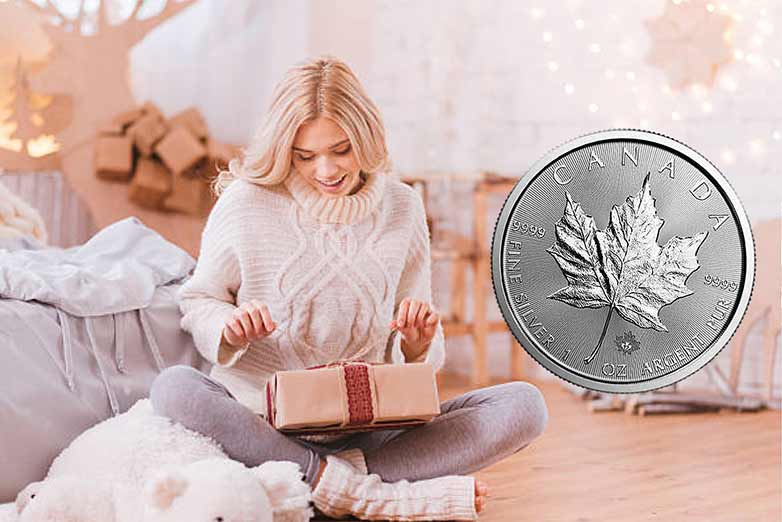Why do we give gifts at Christmas?
Few holiday traditions hold up against the classic ritual of gifts being left under the Christmas tree. You might have fond memories of waking up to run downstairs Christmas morning to breathlessly unwrap new goodies big and small. For years, many of us have enjoyed this wonderful holiday tradition. And so many of us have wondered why do we give gifts at Christmas as opposed to other holidays?
Around this time of the year, Christmas fans and cynics alike might be wondering: What's up with all this gift-giving? When did this start and what does this have to do with Christianity?
Here at Global Bullion, we know all about the appeal of a shiny gold gifts under the tree. These undoubtedly spark a smile across any loved one's face. And we were curious not only why we give gifts at Christmas, but how this became such a global tradition.
So we traced the roots of the passion for presents that dominates Christmas celebrations across the world. What we found may surprise you. The origins of gifts on December 24 isn't as straight forward as you might think...
You can't answer WHY do we give gifts at Christmas without going back further.
One might think the tradition of the Three Wise Men and the gifts to Baby Jesus sowed the seed for those gifts under the pine tree. You might not be wrong. For years scholars have looked at the Gospel of Matthew (2:11). It describes the story of the Magi bringing gifts of gold, frankincense and myrrh to the Baby Jesus. Why gold? Gold coins were often commissioned by royalty - in Persia, for example, the drahm - and given as homage.
But a tradition of winter gift-giving is found to have begun earlier. Pagans in Europe and the Middle East exchanged presents ranging from gold and silver to food, weapons, and handmade goods at several winter festivals. One such was Saturnalia, a chaotic Roman festival in honour of Saturn, god of agriculture, which began on Dec. 17.
During this weeklong holiday in the cold, heavy dead of winter, these pagans would get raucous by drinking to excess. They gave each other gifts, such as pottery figurines, edible treats like fruit and nuts, and festive candles. There was even an ancient Roman equivalent to "Merry Christmas" offered between revelers: "Io Saturnalia!"
We can all relate to lil Ralphie in A Christmas Story when he dreams of getting a gift he knows he'll always treasure (in this case, a BB gun). It's the thrill of recognizing you're loved and appreciated. So how did this tradition begin?
The skeptic will say the corporatization of American culture gave rise to spending hundreds of dollars annually on presents for friends and family. Not so fast. It began during the first half of the 1800s, particularly in New York City, and was a key player in a broader shift of Christmas from a time of public revelry into a home- and child-centered holiday.
In fact, the reinvention of the holiday emerged as a triumph of New York’s elites over the city’s emerging working classes. Yikes.
So why do we give gifts at Christmas, historically?
New York’s population grew 10x between 1800 and 1850. During that time, the upper class got more and more frightened of traditional December rituals of “social inversion.” In these, poorer folks could demand food and drink from the wealthy, and celebrate in the streets. They would forego established social constraints much like on Halloween night or New Year’s Eve.
These rituals occurred any time between St. Nicholas Day (a Catholic feast day observed in Europe on December 6th) and New Year’s Day. For centuries, they had been a way of relieving European peasants’ (or American slaves’) discontent during the traditional slowdown of the agricultural cycle.
In a newly congested urban world, though, aristocrats worried that such revelry might become vehicles for protest. This became a major concern when employers refused to give workers time off during the holidays. Likewise, when a long winter of unemployment plagued seasonal labourers.
But why do we give gifts at Christmas at home? To respond to these concerns, a group of wealthy men who called themselves the Knickerbockers (sound familiar, NBA fans?) invented a new tradition. That's how this time of year gradually moved Christmas celebrations out of the city’s streets and into its homes. They introduced these traditions as a reinvigoration of Dutch customs taking place in New Amsterdam and New York during the colonial period.
Drawing from two story collections by Washington Irving, their most well-known member, these New Yorkers tried domestic festivities on St. Nicholas Day and New Year’s Day. Later, another member of the group, Clement Clark Moore, cemented the tradition of celebrating on Christmas. He did so with his enormously popular poem “A Visit from St. Nicholas” (better known as “The Night Before Christmas”) in 1822.
Santa Claus and why do we give gifts at Christmas?
The friendly guy with an impressive beard has been through many makeovers over the centuries. Santa Claus started as St. Nicholas of Myra, a real-life, 4th-century Byzantine monk who handed out bags of money to the poor.
St. Nicholas was introduced to the U.S. in the early 1800s, and then mutated into a "right jolly old elf" thanks to the aforementioned poem "A Visit From St. Nicholas."
By 1890, children could meet live "Santas" at department stores. The new name having been borrowed from the Dutch version of Saint Nicholas, Sinterklaas. In the 1930s, Santa's red-cheeked face was spread across advertisements for Coca-Cola, solidifying his status as Yuletide's main man san.

